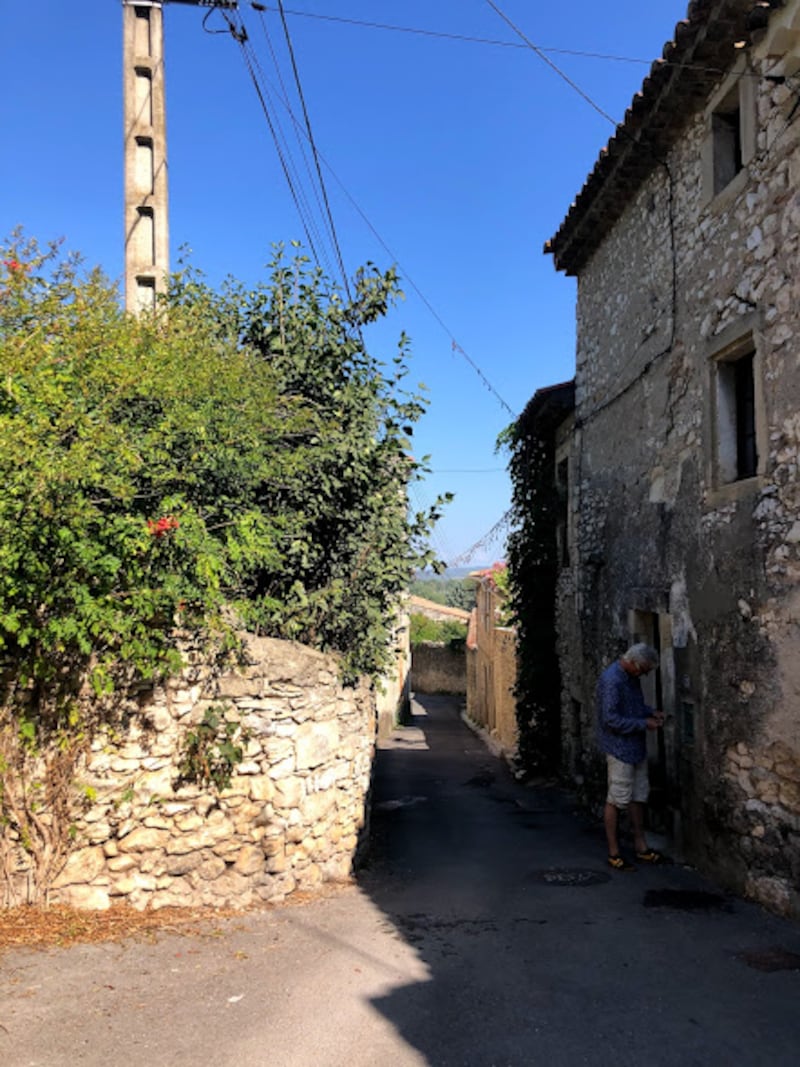More than 20 years ago, with a young and growing family, we bought a holiday home in a village in the départment of the Gard, in Languedoc, in the south of France.
Though we bought it during the Celtic Tiger years, the property is far from being a chateau, or a villa, and some might question whether it even qualifies as a house. About 500 square feet, it has an outdoor loo that was once, we were told, a donkey shed, and a front door that opens directly onto the narrow village road. We bought it from a retired schoolteacher who lived in a local town and only used it during the summer. I once tried to stay there in December but in winter the stone walls soak up the damp and the cold, and the house becomes uninhabitable.
Still, it is an enormous privilege to own. The old three-story, three-room structure is charming and came with a field about 50 yards up the street that is shaded by old trees. The farmers in the village grow crops and tend vines in the surrounding countryside, but it is not unusual for them to also have a small plot in the village close to their homes. Our house came with such an ancient arrangement.
Dinners in the garden that summer happened after the sun had gone down, when it was just us, the cicadas and the stars
It is in this field, now our garden, where we have spent most of our time, and have had most of our meals, during our holidays in the village over the years. We have used the house as something of a tent, albeit one with a red-tiled roof, a vaulted ground floor room with an open fireplace, and stone walls so thick that trying to break through to the former donkey shed next door is not a viable option. I like to think that, as a consequence of buying the house, a significant percentage of my family’s time over the past two decades has been spent outdoors. And there has never been any wifi.

We bought the house with two friends, for a sum which, when divided, meant each couple had to pay the equivalent of the price of a well-used, second-hand car. When the children left infanthood behind, and the house got a bit crowded, we built a decent-sized shed in the garden and put beds in it so they could sleep there. They have grown up used to the rural darkness and the hooting of owls.
The village is on a hill, and at the bottom of that hill is the Gardon, the major river of the region. Beyond the river there is a flood plain that stretches towards the Cevennes, the mountain range that legend says owes its name to Julius Caesar.
Violent storm
During our first summer in the village, we worked out a system for managing the heat. The temperature was pleasant in the mornings, but it was a good idea to be close to water – a river or the outdoor public pool in an adjacent town – by midday, so the children could stay cool. You could return to the village in the mid-afternoon, have a snooze indoors or in the shade, and then get ready for a late dinner in the garden when the temperature had dropped, and the cicadas were in full voice.
[ Making their mark: Colm Keena on revealing graffiti on a French castle’s wallsOpens in new window ]
In the Gard, the end of the summer season is often heralded by a particular type of violent storm called a Cévenol episode. As the Mediterranean heats up during the summer, ever greater loads of moisture are absorbed by the warm maritime air. In late August or early September, if this air moves north, it passes over the flat inland area of the Gard and then rises when it meets the Cevennes. The cooler temperature of the mountains causes the air to dump the water it is carrying, and the water then rushes through the region’s river system towards the sea. One of the main rivers in the system is the Gardon.
After our first summer in the house, we returned to Ireland at the end of August but our friends remained into early September. One day there was a violent storm and the sloping street outside our front door soon looked like a busy mountain brook. Our friends went to bed and were most surprised when they woke up the next morning, looked out the top window of the house, and saw a vast expanse of water where the bottom of the village should be. Some buildings were entirely submerged.
This flood has since been much studied. The rainfall that year was spectacularly heavy and fell at the same time over an unusually wide area, completely overwhelming the river system. More than 20 people died, and millions of euro of damage was caused. No flash flood of such a magnitude had ever been recorded in the region before, but there have been quite a few of lesser magnitude since.
Dinners in the garden that summer happened after the sun had gone down, when it was just us, the cicadas and the stars
Our next introduction to the extraordinary energy that exists in the weather system in southern France came the following year: 2003 saw a Europe-wide heatwave that, in France alone, is estimated to have led to the deaths of approximately 14,000 people. We were in our house in the Gard for much of it and, curiously perhaps, it reminded me of my childhood holidays in the west of Ireland in the 1960s and 1970s when, all too often, a significant part of the time was spent indoors, looking out at the rain. With heatwaves you also find yourself trapped indoors by the weather, though it’s best to keep the windows covered and the light out.
Midnight cool
Dinners in the garden that summer happened after the sun had gone down, when it was just us, the cicadas and the stars. Often we went for a post-prandial walk to the village square, where we’d find the older residents of the village, who had been cooped up in their homes all day, out having a chat in the relative cool of midnight. For us, dealing with temperatures equivalent to or higher than the human body temperature (36/37 degrees) felt like a bit of an adventure. But for the older villagers, it was a different matter entirely.
Subsequent summers were better. The temperature might rise to the low-to-mid-30s but, especially as the children grew older, it was not that much of an inconvenience and often a great pleasure. The warm, dry air; the light; the ripe locally grown fruit; the cheap rosé from the local co-operative; the language; the neighbours we got to know – including a couple who had moved to the village from London – all contributed to the house becoming a second home, and the village a place we could talk about when we were back at work in Dublin.
We talked about the intensity of the heatwave and, most of all, its early arrival. There was no missing my neighbour’s dismay and her sense of dread
But all the while the weather was changing. The man who had moved from London about the same time we’d bought our house liked to walk with his dog in the oak scrubland up around the back of the village, but the way the temperatures were inching up year after year made the summers harder and harder to bear. Eventually he and his wife decamped, selling their house in the village, and buying a new one in the southeast of Ireland.
This year, for the first time, we went down to the house in early June, due to circumstances but also in the expectation that the temperature would be pleasant. When we arrived the nights were cool, so it was easy to sleep, and the temperature during the day was in the high 20s, so it was pleasant to sit in the garden, or go cycling along empty roads through the vineyards and the scrub. But then, suddenly, the temperature soared, to highs of more than 40 degrees, so that all we could do was stay indoors, preferably with the windows covered. The nights stayed warm, making it hard to sleep.
A few days into this temperature spike I met an older neighbour out for an early morning walk. We talked about the intensity of the heatwave and, most of all, its early arrival. There was no missing my neighbour’s dismay and her sense of dread. Other, younger neighbours also shared their astonishment at the early arrival of the heat. The village faced into the coming summer with some trepidation.
They are worried about the consequences for themselves and their children if the summer just gone is set to be the new normal, or a stagepost on the way to even hotter, longer, dryer seasons
Myself and my partner were glad to head back to Ireland, but our adult daughter and her friend stayed for the summer, keeping out of the heat when it was dangerous, making the most of the early mornings, the late evenings, and the nights. They made forays to surrounding cities and towns, using the bus and train service, sometimes finding their travel plans disrupted by forest fires. The drone of military aircraft passing overhead on the way to drop water on wildfires became one of the sounds of their summer. Everyone watched out in case the next fire was near the village.
We returned for a second short visit in September, by which time the temperature was dropping. But the extraordinary heat had persisted through the previous three months, and there was no mistaking how exhausted our neighbours were. They are worried about the consequences for themselves and their children if the summer just gone is set to be the new normal, or a stagepost on the way to even hotter, longer, dryer seasons.
There were a series of September storms in the region after we came home, though none that caused damage in the village. But the rising energy in the local weather system, and the associated extreme weather, is now impossible to ignore. Summer in the south of France - still a huge privilege for us - has taken on an altogether new connotation.











